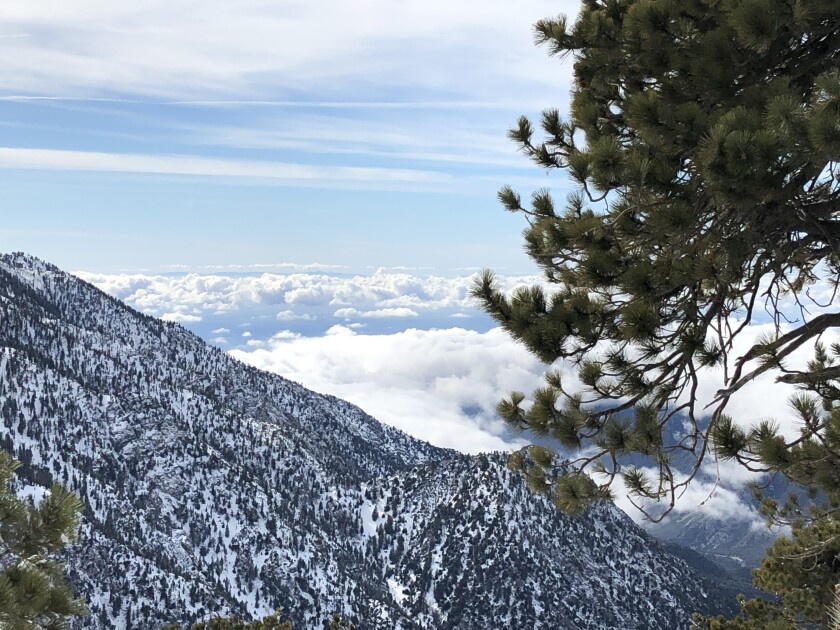You’re ready to embark on your first or next mountain adventure, but how do you prepare? Read on to gather all the information that will make your hike up Mt. Baldy as safe as possible.
Get to Know Mt. Baldy
At over 10,060 feet above sea level, Mt. Baldy rests in the San Gabriel Mountains in San Bernardino County in Southern California. It is the highest peak in the Los Angeles area. Mt. Baldy’s formal name is Mount San Antonio.
Its nickname, which was inspired by its lack of trees at the very top, came from early American miners who settled in the area. The Native American Tribe, Tongva, is believed to have called Southern California home for roughly 7,000 years, including the San Bernardino National Forest where Mt. Baldy is located.
Mt. Baldy is a year-round destination and suitable for hikers of all levels. But preparing is still key for a safe and enjoyable trek up this mountain. The following information will aid you in planning your adventure.
Routes to the Top
There are a few routes to reach the summit of Mt. Baldy. Regardless of which one you choose, remember that safety measures should always be taken to protect yourself and everyone else on the trail.
Option one is to ride the ski lift, which you can catch from the ski area parking lot. It takes you to the Top of the Notch Restaurant, from which you can take the Devil’s Backbone trail. This path offers you a 7-mile round trip hike with an elevation gain of 2,200 feet. The ski lift, however, only runs on the weekends during the summer.
A second option, Baldy Notch, begins on the service road from the ski area parking lot. This leads you to the restaurant at 7,800 feet. From there, continue to Devil’s Backbone. This route is a 3,500-foot elevation gain and roughly 6 miles each way.
The last hiking option, the Mt. Baldy Fireroad, starts at the Manker Flats campground. The 2.8-mile trek begins on an access road, with the first 0.75 miles of the trail paved, and passes the bottom of San Antonio Falls. Follow the trail to Baldy Notch and then to Devil’s Backbone. If the trail from Baldy Notch to Devil’s Backbone is unclear, stop at the snack shack in Baldy Notch and ask for directions.
Bear Canyon is a 13-mile roundtrip to the summit and starts at Mt. Baldy Village. This ascent is preferred by more technical and advanced hikers. For an easier descent, take Devil’s Backbone.
Other Trails
The Three T’s trail is approximately a 10-mile hike. You won’t reach the summit, but you’ll go through a variety of peaks, including Thunder, Telegraph, and Timer Mountains. Take this one from Baldy Notch or Icehouse Canyon.
From the Icehouse parking area you can take the Icehouse Canyon trail, which leads to many side trails after reaching Icehouse Saddle. A one-way trip is 3.7 miles but can be turned into a loop by hiking down the Chapman Trail.
Costs and Permits
For anyone participating in any outdoor recreation, a national forest pass is required. A daily pass is $5 and $30 for an annual pass. A National Parks pass, which is $80, can be used to enter the Mt. Baldy recreation areas. To park at the ski area may involve an additional parking fee.
For campfires, a permit is not required. But they are only allowed in well-developed campgrounds or picnic areas. Always check for updates and changes in fees, including droughts and wildfire risks.
Entry is limited to walk-in only during the winter months. Adventure Passes or Golden Passports are still required during this time.
Camping at Mt. Baldy
Manker Flats is the only campground available in the Mt. Baldy recreational area. Its amenities include 21 sites, tables, stoves, water, and toilets. Most of the camping sites house RVs less than 16 feet in length. Hookups, showers, or sanitary disposal services are not offered at the campground.
The overnight fee per site is $12 per night with a $5 fee for additional vehicles. There is also a daily use fee of $5 per site that is covered if you have an Adventure Pass. Another benefit to having an Adventure Pass is the $1-$2 discount on camping fees.
Gear and Safety
Always check the weather before heading out. Elements such as rain, ice, snow, and wind can make it dangerous for anyone to hike Mt. Depending on the time of year you plan to hike, make sure your gear consists of proper hiking shoes or boots, hiking poles, sunblock, sunglasses, hat, layers to adjust for sudden changes in weather, food, water, a first-aid kit, GPS, and a map to name the necessary basics.
It is highly recommended that only expert mountaineers hike Mt Baldy in the winter or during hostile weather conditions. Avoid injury or fatalities by planning, training, and preparing.

